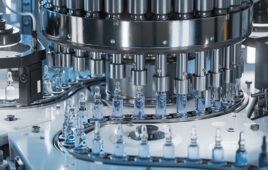 Global pharma and medical device giant Johnson & Johnson (J&J) has ditched its iconic cursive logo that dates back to the late 19th century, and rebranded its Janssen pharma division as Johnson & Johnson Innovative Medicine. The move underscores the company’s push to prioritize higher-margin prescription drugs. This strategic move comes amidst a backdrop of significant legal challenges the company has faced in recent years.
Global pharma and medical device giant Johnson & Johnson (J&J) has ditched its iconic cursive logo that dates back to the late 19th century, and rebranded its Janssen pharma division as Johnson & Johnson Innovative Medicine. The move underscores the company’s push to prioritize higher-margin prescription drugs. This strategic move comes amidst a backdrop of significant legal challenges the company has faced in recent years.
In the five-year period from 2018 to 2022, Johnson & Johnson was the most active defendant in medical device and pharmaceutical cases. In addition, before spinning off its consumer health division, the company was targeted in tens of thousands of lawsuits alleging J&J-branded talcum powder causes cancer. Earlier this year, a judge dismissed the company’s attempt to settle thousands of lawsuits through bankruptcy.
The chart below shows the number of cases filed against J&J-affiliated entities in the life sciences sector from 2018 to 2022. Johnson & Johnson faced the highest number of product liability cases in the pharma/medtech sphere, with the bulk of these allegations related to talcum powder products. Close behind was Johnson & Johnson Consumer Inc., with C. R. Bard, Inc. ranking third. Data sourced from Lex Machina:
Last month, the company, J&J wrapped up its spin-off of its consumer health division, which it christened Kenvue. The segment makes consumer products ranging from Band-Aids to Tylenol. The company retains a 9.5% share in Kenvue, which J&J may consider offloading in the coming year.
From cursive to cutting-edge: Johnson & Johnson rebrand focuses on high-margin drug innovation
J&J’s rebranded drug development segment will focus on development in oncology, immunology, neuroscience, and cardiovascular, among other areas. In July, the company ended R&D work in Janssen’s infectious disease and vaccine unit. It also pulled several programs from its infectious disease pipeline earlier this year, most of which were potential hepatitis B therapies. The moves came as part of a “prioritization” of its R&D business, according to the company’s second quarter earnings report. As a result of that strategy, it dropped experimental treatments for hepatitis B and D, flu, and some HIV candidates from its pipeline.
In its second quarter earnings call, the company noted that it planned to grow its pharma division to $60 billion by 2025. J&J plans for continued growth each year, despite key patent expirations for the blockbuster Stelara (ustekinumab) in 2025 and 2026. The company has won a growing number of indications for the drug over the years, including for moderate to severe plaque psoriasis, active psoriatic arthritis, Crohn’s disease, and ulcerative colitis.
Overall, CEO Joaquin Duato intends to grow the pharma division each year with “above-market compounded annual growth of at least 5%,” as he noted in the second quarter earnings call.
Duato noted in the call that its current portfolio is “underappreciated” while Chief Financial Officer Joe Wolk noted its pharma division delivered operational sales growth of 8.6% in the second quarter, excluding its ill-fated COVID-19 vaccine. “We continue to outpace the market,” Wolk said.
Sustained growth amidst headwinds
Despite headwinds, Johnson & Johnson has demonstrated a solid growth trajectory over the years, with its market capitalization hitting $415.45 billion in 2022. Despite some periods of volatility, its growth trajectory has been mostly steady over the past decades. Key acquisitions such as McNeil Consumer Products in 1982, Centocor in 1998, Scios in 2002, and Momenta Pharma in 2020 helped fuel growth. The company’s decision to jettison its consumer division and double-down on medtech and prescription pharma represents a higher-stakes strategy. It aims to capitalize on higher profit margins and innovation, while also exposing the company to the challenges of patent expirations, potential market downturns, and a more pressing need for successful research and acquisition wins.
Filed Under: Drug Discovery and Development, Immunology, Oncology



